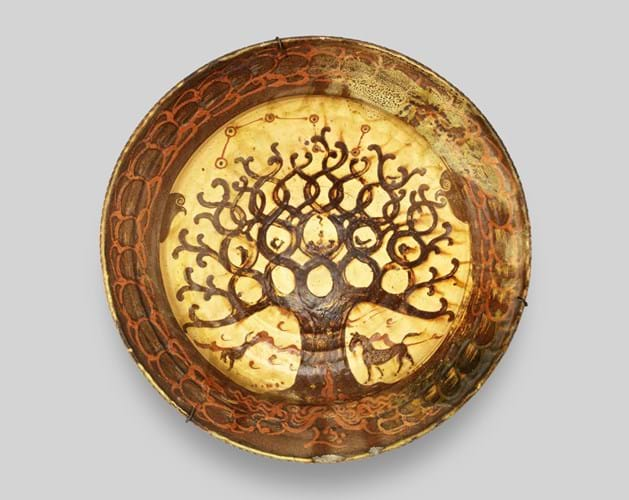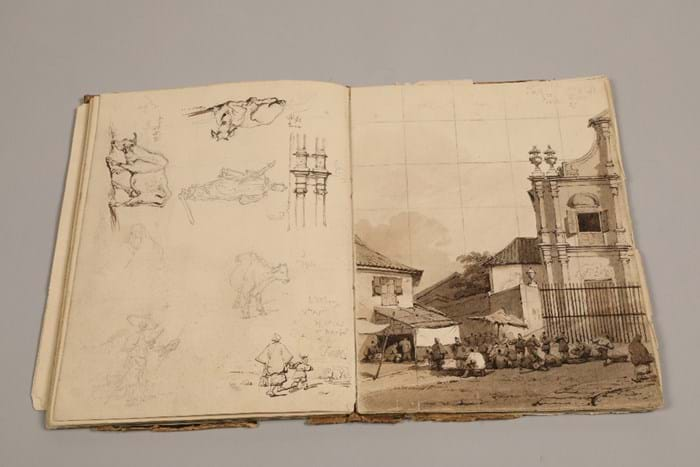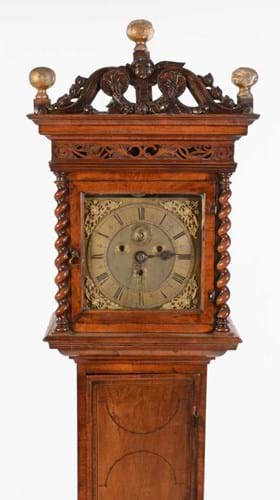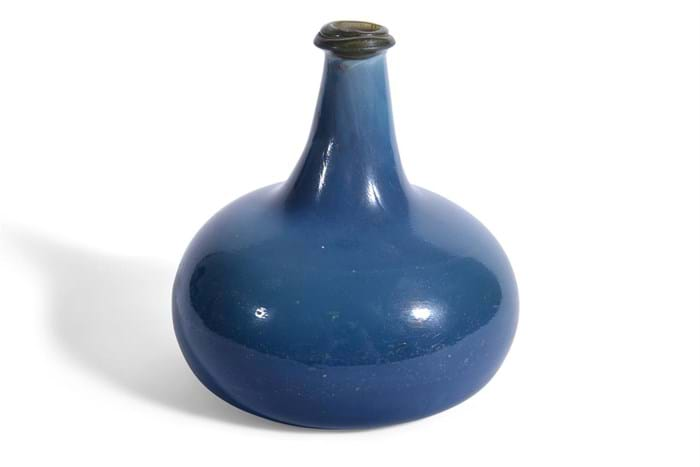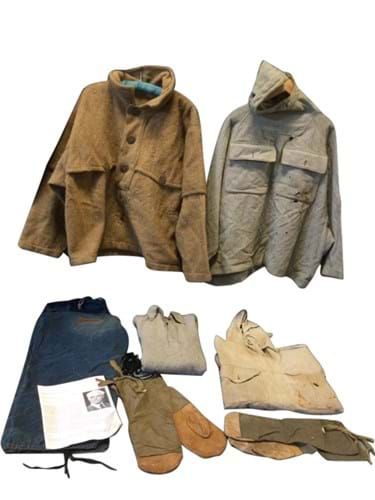1. Bernard Leach ‘Tree of Life’ charger – £49,000
Estimated at £5000-7000, this Bernard Leach ‘Tree of Life’ charger, above, sold for £49,000 at Bonhams’ Design sale on December 7. The price is the second highest for Leach and comes hot on the heels of the record £77,000 bid for a similar dish as part of the collection of the late New York art dealer Dr John P Driscoll sold by Phillips in association with Maak Contemporary Ceramics on November 10.
Bonham’s dish has a full provenance. Signed and dated 1925, it was given that year by Bernard Leach and Michael Cardew to Leo and Eileen Baker on the occasion of their wedding in 1925. It was one of five lots from the estate Leo Kingsley Baker (1898-1986), the founder of a handloom weaving business in Chipping Campden, known as the Kingsley Weavers. Baker and Leach were good friends in the 1920s and 30s.
2. George Chinnery sketchbook – £52,000
The sale at Thomas Callan in Ayr on December 3-4 included, estimated at £8000-12,000, this sketchbook by George Chinnery (1774-1852) dated 1838. It includes numerous pencil drawings and ink wash sketches from his time in Macao.
The English artist arrived in the Portuguese territory on September 29, 1825 after a two and a half months on board the ship Hythe from Calcutta. In Calcutta it was rumoured that Chinnery had left India for the good of his health and he himself claimed he was trying to get away from his wife. But the truth was he was desperately in debt and hoped that on the China coast he would gain refuge from his creditors.
As it turned out, the artist never returned to India or Europe. From 1825 until his death in 1852 he remained on the South China coast and was buried in the calm oasis of Macao's protestant cemetery.
Interest in the artist’s work continues apace.
A Chinnery sketchbook featuring over 200 finished watercolour illustrations of Macao and environs with over 69 leaves was sold at Christies in July 2006 for £290,000. The sketchbook in Ayr featured a smaller number of pencil and ink sketches ranging from small figure and animal studies with Chinnery’s ‘shorthand’ annotations to larger double-page landscape compositions. It came for sale as part of a box of books from a vendor in Glasgow. It was thought to have been in the same family for several generations but had been unappreciated and it required some homework on the auctioneers’ part before an attribution was made and its importance understood.
It attracted multiple ‘watchers’ online and eight phone bidders, one of whom was the victor at £52,000.
3. Late 17th century longcase – £11,000
The December 1-2 Country House & Fine Interiors sale at Anderson & Garland in Newcastle included this late 17th century walnut longcase clock by local maker William Prevost.
Born of French descent in c.1662, Prevost was probably trained in London but seemingly did not join the Clockmakers' Company and probably worked most of his life in the North East. He was remarkably skilled.
Famously, after a contretemps in a local tavern in 1698, he challenged fellow Newcastle clockmaker Deodatus Threlkeld (1657-1733) to a wager to decide who was the better maker. Prevost's submission is thought to be the year-going striking longcase recently offered by dealers Carter Marsh as part of the John Taylor collection with a price tag of £95,000. Striking a bell a minimum of 56,940 between windings, it is believed to be earliest known year-going and striking longcase made outside London.
Threlkeld's clock no longer survives but it must have been of great merit as the judges, Samuel Watson (Mathematician to the King) and Edward Burgiss, proclaimed him rather than Provost the winner.
Anderson & Garland’s clock is also well above the norm as under the hood is a three-train movement sounding the hours on 11 hammers and bells. The line-inlaid case, based around a pine carcass, was also good quality provincial work although it will require restoration to damaged fretwork, missing locks, splits and missing veneers.
It was estimated at £2500-3500, a modest sum for a rare provincial clock of this period and found plenty of admirers before it sold at £11,000.
4. English ‘black glass’ wine bottle – £11,000
In natural light this English ‘black glass’ onion form wine bottle appears distinctly blue. Bottles of this curious and appealing colour (this one dating from c.1710) are something of an enigma. However, the opaque blue is probably the result of impurities in the mix (chlorides and sulphates of potassium and sodium) that would occasionally produce a surface scum known as glass gall (or sandever).
Glass gall is unheard of in modern glass production when ingredients are carefully measured but it was commonplace in the Stuart and Georgian periods and could be used to quirky effect.
Only a handful of these bottles have survived and they certainly make a striking addition to any serious collection of black or green glass. This one came for sale at Dreweatts in Newbury as part of the collection of barrister Phillip Lucas, owner of a silk merchant’s house in Spitalfields, London. The best performing lot in the sale, it was guided at £800-1200 but sold at £11,000.
5. Everest expedition clothing – £3600
This group of clothing, offered for sale by Railtons in Wooler, Northumberland on December 3, was used by Lawrence Wager (1904-65), geologist and explorer, during the 1933 Everest expedition. The British-led attempt on the north east ridge of the world’s highest mountain was the first since 1924 when Andrew Irvine and George Mallory had disappeared. Irvine’s ice axe was found en route.
Wager, who had shown his mettle as a mountaineer when working in Greenland, was among the party chosen for the team's first attempt on the summit on May 30. Although falling just 1000 feet short of the summit before turning back because of the lateness of the hour and the poor snow conditions, they equalled the highest point reached in mountaineering at the time and set a record for climbing without supplemental oxygen that would not be bettered until 1978. Wager also collected numerous geological samples: The Oxford University Museum of Natural History has collection of 244 rocks he took from Everest.
The two pairs of leather mittens, woollen shirts, an anorak and wood jacket were offered by Railtons on behalf of a descendant. Although difficult to estimate they always looked a little undercooked at £20-30 and indeed sold at £3600.


